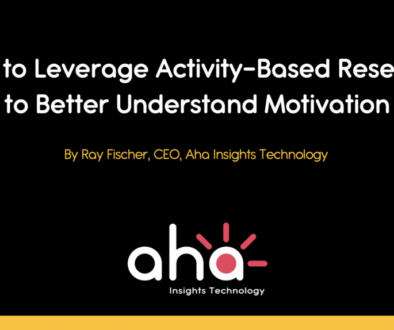How to create a successful qualitative research study: Building a better respondent guide
Online qualitative is a powerful tool. Used properly for creating a marketing research study, it can generate rich consumer insights from engaged and willing respondents. Used improperly it can create a mountain of useless data that was painful for the respondents to generate and is exponentially more tedious and time-consuming for consultants to analyze.
The keys to architecting a great online research study is obviously understanding the objectives and then creating a series of activities that humanize your respondents and encourage them to openly share their thoughts and feelings in a way that does not feel like work but is actually something respondents look forward to doing.
You know you have achieved this research nirvana when the online qual study is over and you get unsolicited notes from respondents saying how much they enjoyed the study and that it made them think about themselves and the subject at hand in ways they had never anticipated. A more pragmatic and bankable indicator of a successful guide is a 95%+ successful completion/compliance rate; nearly everyone completed all of the tasks on time with quality responses.
What makes a online respondent guide great?
Follow these simple guidelines and you are on your way to creating a better qualitative study and higher respondent completions rates:
Full Disclosure: Make sure respondents know what they are doing and why they are in the study. Tell them what is expected; what they will be doing, the schedule of events and when things are due. This takes the mystery out of the process and makes them feel sense of responsibility to provide you with focused, and connected responses.
Bend‘em But Don’t Break‘em. Challenge their creativity push their introspection but don’t overwhelm them with too many questions and tasks that will dull their senses and make them feel like they are working on a term paper. Our prevailing thought is that 20-30 minutes is the optimal amount of time for a respondent to engage in an activity at one time. Beyond 20-30 minutes the law of diminishing returns sets in for the respondent and the researcher – and tired respondents drop out.
Design With Analysis In Mind. The data from online studies can be overwhelming if the study has too many activities and too many questions. For example, think about 50 respondents answering each question in a study. Ask the right questions, encourage them to elaborate on the important stuff and don’t use the method to ask every question a client may have. It can seem like an unlimited opportunity to ask as many questions as you want…resist the temptation.
Be Creative…Straight Q&A Can Be Boring. Using methods such as “storytelling”, “letters to friends” and “collage” can make things interesting and engaging to the respondents and more importantly provide rich symbolic insights for researchers. Well-planned open-ended activities will generate more learning for researchers; respondents love to talk about themselves and creative activities allow then to emote more freely than in straight Q & A approaches.
Successful online research studies take some planning. Getting off to great start with your respondents is one of the keys to finding deep and meaningful insights.




